7 awe-inspiring geological sites to explore in Ireland
5 MINUTE READ
What comes to mind when you think of Ireland? The country might be best known for Guinness, folk music and storytelling, but did you know it also contains more than its fair share of ancient landscapes – and legends to go with them.
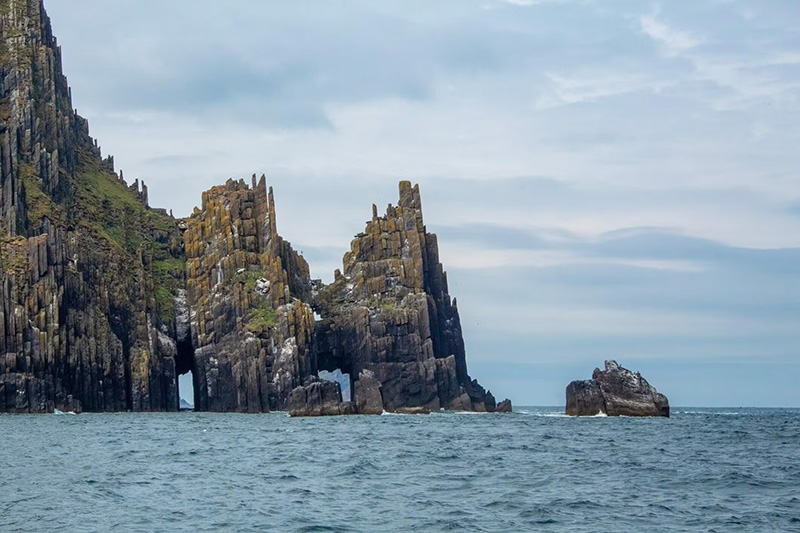
Look beneath the surface of Ireland’s gentle green hills and quaint villages and you’ll discover a landscape that tells a dramatic tale spanning over 1.7 billion years, encompassing ancient tropical seas, landscape-shaping volcanic eruptions and Ice Age scars. The lush fields, rugged coastlines and dramatic legends that you can see and hear in Ireland today are just the latest flourish in a geological story that’s still being written.
Here are 7 of Ireland’s most incredible geological sites, guaranteed to spark your sense of awe. Best of all, you can see many of them on GeoCultura’s small-group geological tours of Ireland.
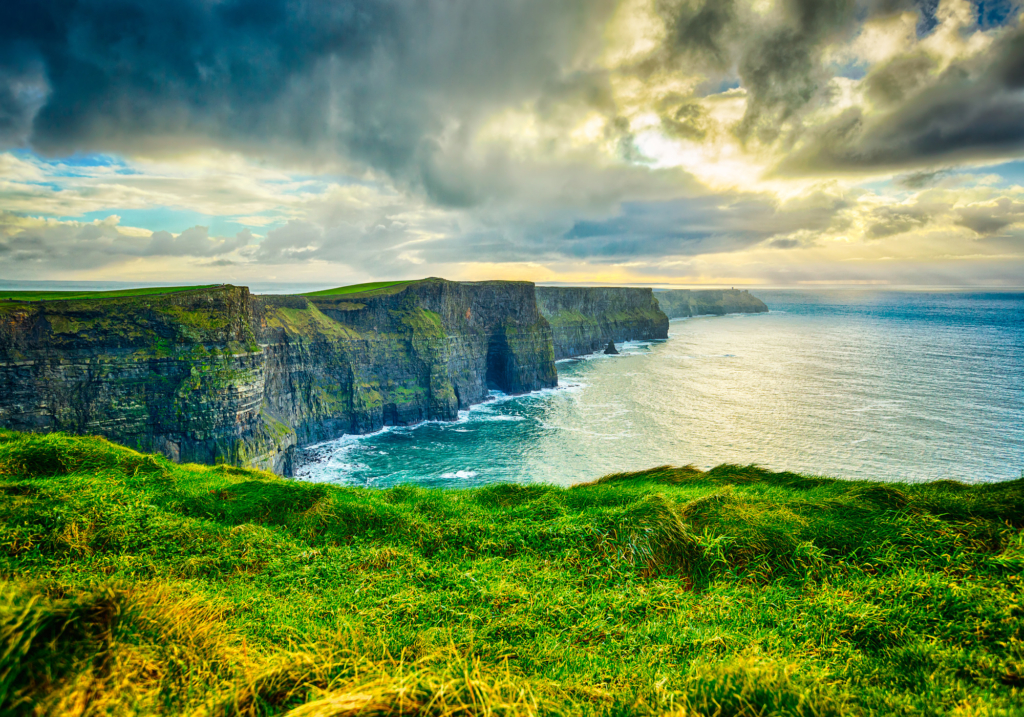
1. Cliffs of Moher: Ireland’s most famous face of stone
Potterheads will recognise these majestic sea cliffs from the sixth Harry Potter film. They harboured one of Voldemort’s horcruxes in Harry Potter and the Half-blood Prince. Soaring more than 200 m above the crashing Atlantic waves, the cliffs expose layers of shale and sandstone laid down 313–326 million years ago. Sea stacks – including the one Potter and Dumbledore apparated to – and arches complete the dramatic scene.
You can walk above – and sail below – these iconic cliffs on our Highlights of Ireland’s Wild Atlantic Way: 7-day tour from Dublin.
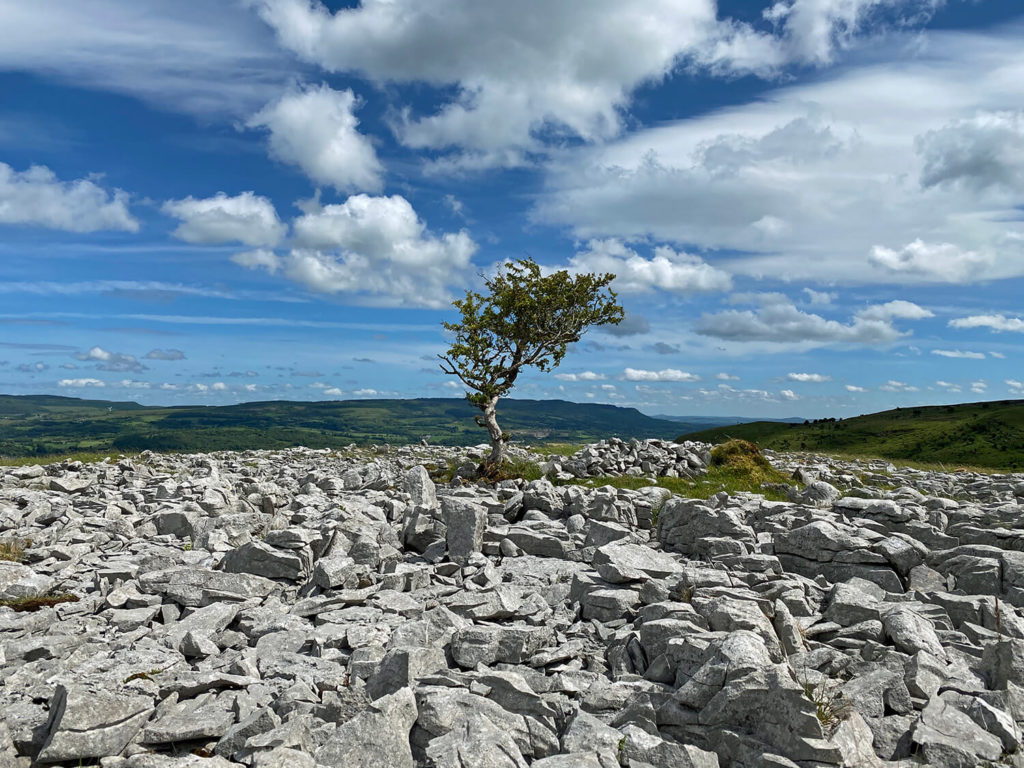
2. The Burren: an unexpected moonscape
The Burren is an Ireland you never expected to see. Here, the lush countryside gives way to a grey sweep of twisted limestone pavements, whorled with hypnotic patterns and dotted with traces of past civilisations. The Poulnabrone megalithic monument, a portal tomb set amid this stark terrain, is around 5,200-5,800 years old. That’s even older than Stonehenge.
Beneath The Burren lies Doolin Cave, where Europe’s longest free-hanging stalactite hangs like a chandelier in the dark. Above and below, this place is a masterclass in time and transformation – and a cornerstone of GeoCultura’s Ireland tours.
3. Newgrange tomb: aligned with the sun
Older than Stonehenge and the Egyptian pyramids, Newgrange is a 5,200-year-old passage tomb wrapped in mystery and Ice Age stone. Built up from 97 boulders, or kerbstones, it’s perfectly aligned to catch the rising sun on the winter solstice. Geologically, its foundations rest on ancient glacial till, shaped during the last Ice Age. Culturally, it’s one of Europe’s great prehistoric wonders – you can still see Neolithic artwork engraved into the stones.
Part of the Brú na Bóinne UNESCO World Heritage site, Newgrange sets the tone for understanding how geology and human imagination intertwine in Ireland. Visit it on our Highlights of Ireland’s Wild Atlantic Way: 7-day tour from Dublin.
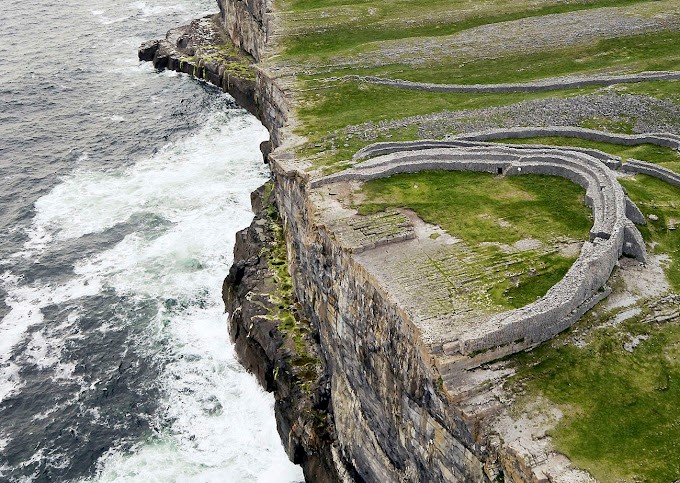
4. Dún Aonghasa: stone fort on the edge of the land
Teetering on the brink of Inishmore, the largest of the Aran Islands, Dún Aonghasa is not for the faint of heart. Film buffs may spot that these wild shores featured in The Banshees of Inisherin – but nothing compares to actually standing among the fort’s semicircular walls on the edge of sheer limestone cliffs, with the wind on your face and the past all around. The Atlantic views are dizzying. It’s a must-see on GeoCultura’s West of Ireland: Galway Bay & Cliffs of Moher tour.
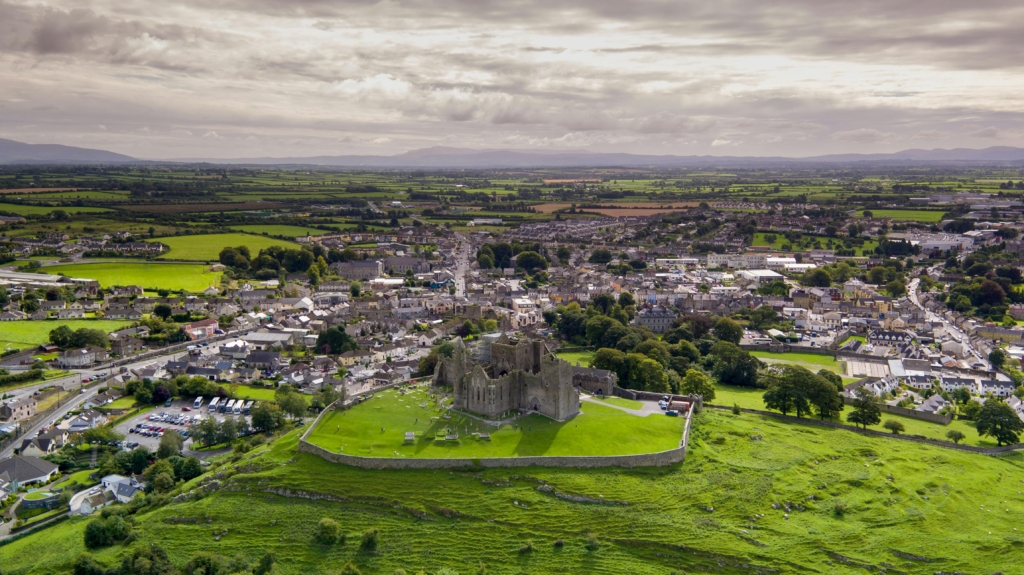
5. Rock of Cashel & Blarney Stone: legends set in limestone
Legends cling to the limestone at both the Rock of Cashel and Blarney Castle. At Cashel, Ireland’s most impressive clutch of medieval ruins perch on a dramatic limestone outcrop. This former seat of kings and ecclesiastical power makes for a truly unforgettable sight, especially when silhouetted against moody skies.
Further south, myth meets geology at the Blarney Stone. Kiss the stone set in the battlements at the top of the tower of Blarney Castle if you hope to unlock the gift of eloquence. The ritual may be playful, but the stone itself has serious geological pedigree. It’s a slab of fossil-rich carboniferous limestone – although the many tales behind the origin of the stone are just as fascinating, variously involving witches, the Crusades and fairies.
Give yourself “the gift of the gab” on our Highlights of Ireland’s Wild Atlantic Way: 7-day tour from Dublin.
6. Ring of Kerry: road trip through time
Few journeys match the drama of the Ring of Kerry. This 111-mile loop winds through a landscape shaped by glaciers and laced with legends. Drive its rugged coastlines, mossy forests and tumbling streams on our Highlights of Ireland’s Wild Atlantic Way: 7-day tour from Dublin. You’ll get to know the geological secrets (and tantalising stories) behind the sweeping panorama from Moll’s Gap across the MacGillycuddy’s Reeks, and the aptly named Ladies’ View, where Queen Victoria’s entourage once gazed in awe. Torc Waterfall, a cascade of natural beauty, completes the scene.
7. Loop Head & Bridges of Ross: Ireland’s wild Atlantic edge
Loop Head has a wilder, quieter kind of majesty compared with the better-known Cliffs of Moher. It’s one of the most dramatic headlands on the already-dramatic Wild Atlantic Way. Watched over by the great Loop Head Lighthouse for well over 300 years, Atlantic waves crash against cliffs on one side, while the River Shannon meets the sea in a wide yawn on the other.
A little further north around the Loop Head peninsula are the Bridges of Ross. Once a trio of natural sea arches, now only one still stands – testament to the ongoing artistry of erosion. Watching seabirds wheel above the stacks and breathing in the salt spray here is a highlight of our West of Ireland: Galway Bay & Cliffs of Moher tour.
Peel back the layers of geology, heritage and folklore of these amazing places on our small-group tours of Ireland: West of Ireland: Galway Bay & Cliffs of Moher and Highlights of Ireland’s Wild Atlantic Way: 7-day tour from Dublin.